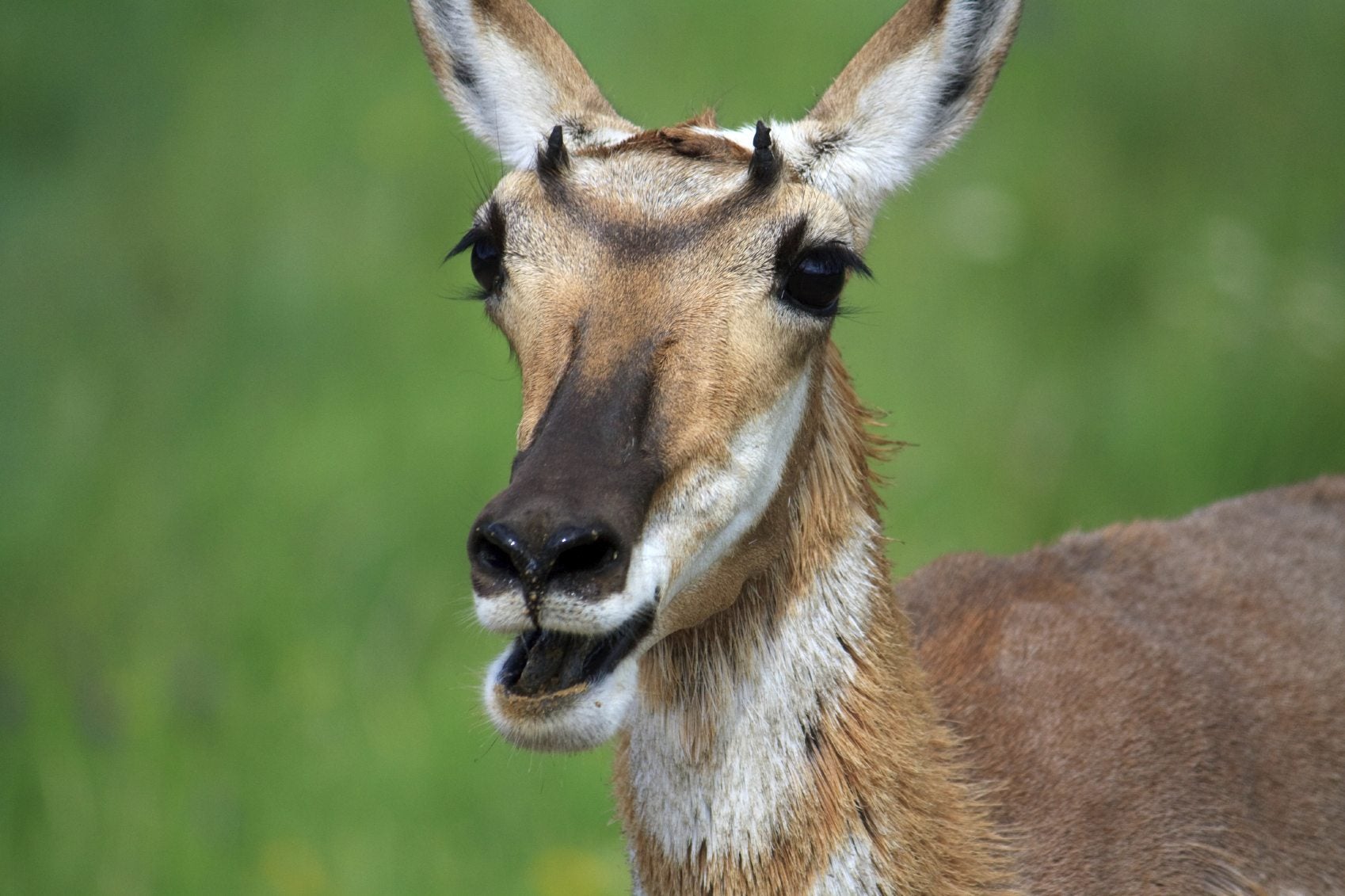Antelope Eating Plants: Learn How To Deter Pronghorn From Gardens


Most of us know the song “Home on the Range,” where "the deer and the antelope play” are a reference to the wildlife that abounded in the early American West. The antelope in the song is likely the American pronghorn, which is closely related to the antelope and goats. These majestic creatures, with their large eyes and backwards pointing horns, are pests in many gardens. Antelope control requires a (forgive the pun) 4-pronged assault, careful planning and vigilance.
How Can I Keep Antelope Out of My Garden?
The term antelope can be confusing because it usually refers to grazing ruminants indigenous to Africa and parts of Eurasia. These hoofed animals are also often confused with deer and may be seen invading gardens and munching on our prized plants. Gardening Know How’s Q&A page is often asked, “How can I keep antelope out of my garden?” Antelope eating plants is a recurrent theme in the Great Plains, as well as the central and southern United States. These large, lovely animals can wreak havoc on the carefully landscaped yard, making it important to deter pronghorn from gardens. Pronghorns are vegetarians and can make a meal out of both native and non-native flora. The youngest foliage is favored by most grazing animals, but they will also happily munch on larger, established plants. Males can do damage during rutting season when they rub their antlers on tree bark and scrape their hooves over woody trunks. American antelope eat grasses, sage brush, wild herbs and other prairie plants in the wild. Animals that have veered too near human populations have a great fondness for delicacies, or plants not native to the habitat. Our ornamental plants may seem like candy to these undiscerning beasts. There are many strategies, however, to prevent antelope eating plants BUT they are not fool proof.
Early Antelope Control
Prevention is crucial when gardening in an area with known herbivores. A fence that is at least 8 feet (2.4 m.) high can prevent most antelope from entering the area but, in lean times, a hungry pronghorn can even jump that height. A living fence is also a good deterrent as long as it is 10 feet (3 m.) tall and has uncomfortable texture. When considering landscaping, choose plants for which the animals have little taste. Thorny, spiny and aggressively scented plants are generally not favorites. Some of these that should be safe are:
Some annuals to try might be:
Perennials include:
Avoid deciduous plants with smooth bark. This means fruit trees, birches, and many others. If you do have these trees, install a fence around the base to prevent damage to lower limbs and bark.
Repelling Pronghorn Antelope in Gardens
Repellents are a safe way to deter pronghorn from gardens. Natural methods include distributing human hair, deodorant soap hanging from trees, a spray made of eggs and water, and gas soaked rags. Many of these methods require frequent redress and are not a guarantee a hungry pronghorn won’t still find its way past your odoriferous traps. Purchased chemical repellents may have slightly more effectiveness but have the same issue with longevity. Alarms, radios and motion activated sprinklers are other options. A simple spray of cayenne, garlic and a bit of dish soap mixed with water has culinary ease and convenience due to its kitchen available ingredients. Pronghorn antelope in gardens may be an occasional problem no matter which methods you use. Install plants that aren’t irreplaceable and protect those that are. Living close to nature has its delights and problems but it is a lifestyle that most wouldn’t trade due to some encounters with the natural life of the area.
Sign up for the Gardening Know How newsletter today and receive a free copy of our e-book "How to Grow Delicious Tomatoes".

Bonnie Grant is a professional landscaper with a Certification in Urban Gardening. She has been gardening and writing for 15 years. A former professional chef, she has a passion for edible landscaping.